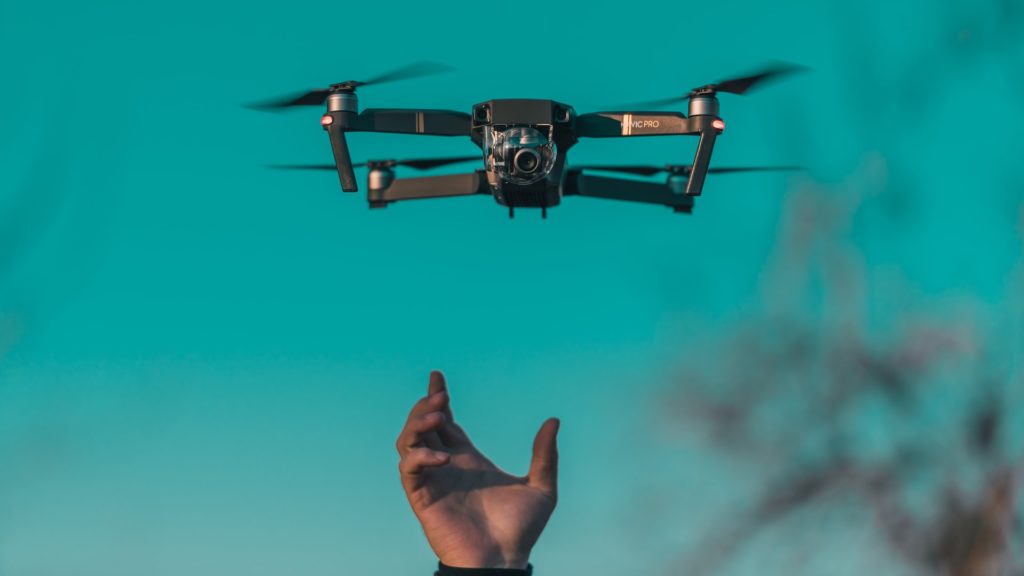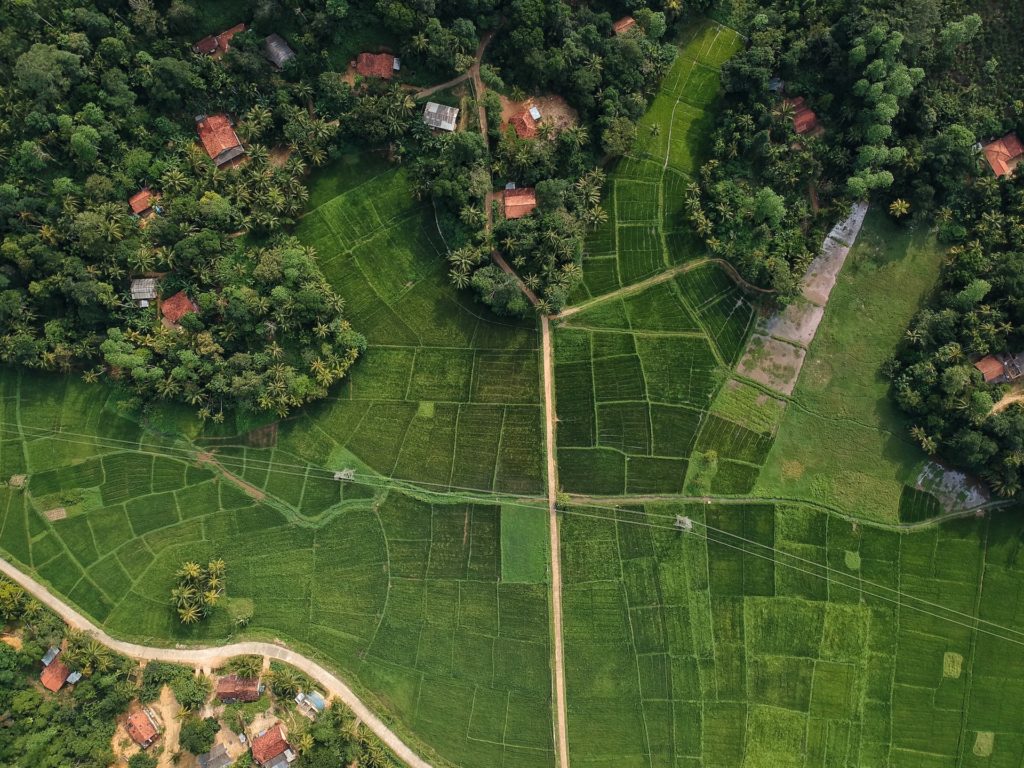Drones have been around for a long time, but only now have they learned how to work with them
Unmanned aircraft (UAV) are not
Another increase in the popularity of drones in the worldoccurred during the COVID-19 epidemic, when cities were closed. Authorities used drones to inspect the streets, and Beijing residents passed food from balcony to balcony. It became clear that drones are a new opportunity, but not yet widespread.
Civilian drone technology turned out to bemore advanced, functional and cheaper than military versions. At the same time, there was a “boom” and revaluation of the market in the venture capital market - the funds realized that the technology was in demand. Now every investor is ready to invest in the production of domestic drones.
Let's talk about how things are in the industryunmanned aerial vehicles, what hinders the development of the market, why we need experimental legal regimes and “digital sandboxes”, and what pains UAV manufacturers in Russia face.
 “The next increase in the popularity of drones in the world occurred during the COVID-19 epidemic”
“The next increase in the popularity of drones in the world occurred during the COVID-19 epidemic”
“We need this super-slim thing that no one else has. Everything else can be bought in China"
China is the world leader in the supply of drones, the companyDJI has captured over 90% of the market. Most often, Russian customers turn to Chinese manufacturers when they want to scan the territory or conduct a survey with further processing. According to Dmitry Devitt, a researcher at the Innopolis University’s Disembodied Technology Laboratory, most often domestic drone manufacturers and research centers are approached to solve narrower tasks.
For example, to create a drone with a gas analyzer,automatic search for leaks and detections, able to work in automatic mode without an operator. Such drones are used in the mining industry - in quarries during blasting. Sending people there is dangerous, and a drone can do the job quickly and efficiently.
Most of the robotics center ordersInnopolis University consists of similar narrow queries. Solutions for them need to be developed from scratch, introducing optical range cameras, thermal imagers and other sensors for remote sensing of the earth as payloads. Often these are small batches of drones, so their prices are higher than the market ones.
Typically, the most expensive thing to develop isR&D (Research and Development) - research work in the field of UAV. The process of developing and creating a processor or sensor can last up to a year.
The university is developinghighly intelligent resource-intensive products and systems involving engineers and scientists who solve a particular problem. After that, these cases are patented, stored and sold,” notes Dmitry Devitt, a researcher at the Innopolis University Laboratory of Ethereal Technologies. “It’s profitable for a business to come for a ready-made solution, not to waste time on development and get a product faster than if they spent their own resources on its creation.”
 “Solutions for them need to be developed from scratch, introducing optical range cameras as payloads”
“Solutions for them need to be developed from scratch, introducing optical range cameras as payloads”
Automated charging stations and devices - a technological trend
According to Drone Industry Insights,In 2022, the global UAV market is estimated at $30.6 billion, and by 2030 it will reach $55.8 billion. In Russia, more than 100 public and private companies are engaged in the production of unmanned aerial vehicles. The share of domestic drones in the global UAV market is about 2-3%.
There are still clear standards for classifying drones.no time. Drones differ in the way they launch, land, size, flight altitude and other indicators. Most often, Russian companies operating UAVs use drones to carry out work in the field of geodesy and land monitoring. Such drones are controlled using remote control systems from the ground. A relatively new concept in the industry is "dronoport" - the technology of an automated station with a drone that works without human intervention.
This is a specialized ground infrastructure -"container with replaceable batteries", which operates 24/7 without human intervention. Droneport allows you to explore and monitor vast territories and industrial production, analyzing data in real time.
HIVE, the author of the technology, has developed thisa solution for monitoring the construction of large facilities and improving safety at industrial enterprises. Later, the world's largest manufacturer of drones DJI released the same droneport. This is the very example when a hypothesis ceases to be a hypothesis, and competitors join the technological race.
Today the HIVE solution is applied on the projectconstruction of the garden city of Neom in Saudi Arabia, in the UAE to monitor traffic on the streets, in South Africa in coal mines. The first such station was launched on the territory of the Innopolis Special Economic Zone.
“There are few regulatory obstacles in the UAEless than ours. Regulations are more flexible. Innovations are perceived more easily by society and are more readily implemented in real life, says Nikolai Ryashin, founder of the HIVE company. “But from a cost point of view, flying to the UAE is not profitable. For a commercial company, one day of flights will cost $800.”
The city is the hardest place to fly
One of the most serious barriers to the development of the drone market in Russia is the lack of clear information in the legislation on the rules for using drones and the ban on the free use of devices.
Sales of products and servicesare always criteria for effective market development. An important role should be played by the state, whose task is to pay sufficient attention to the development of the industry. In the case of Russia, the involvement of the regulator is weak, and several problems follow from this: high inertia in decision-making and indifference to the growing lag behind world markets.
For drone manufacturers, the city isreal territory where there is money and orders. At the same time, in order to coordinate the flight of the drone in Moscow, the company will need a month. To do this, you will need to obtain permission from the FSO, the FSB, the Ministry of Internal Affairs, the Ministry of Emergency Situations, the Federal Air Transport Agency and other departments. According to Nikolai Ryashin, the founder of HIVE, the process of obtaining permission to fly over cities can be accelerated by a digital drone dispatch system.
UTM (Unmanned Traffic Management) - digitalplatforms that allow the integration of drones into the common airspace. These are aviation authorities, mayor's offices of cities and other involved bodies. Such systems are used in the USA, Japan and European countries.
In Innopolis, the development of such a system is being carried out by"Center for organizing the movement of unmanned vehicles." He is developing a platform for data exchange between drones and regulators. The system will help organize technical interaction between local governments and UA operators.
 “Experimentally, the legal regime is a regulatory sandbox in which new regulatory projects are being worked out”
“Experimentally, the legal regime is a regulatory sandbox in which new regulatory projects are being worked out”
Drones make you experiment
In 2022, the Russian government approvedintroduction of an experimental legal regime for launching UAVs in five regions: Tomsk Region, Kamchatka Territory, Chukotka, Khanty-Mansiysk and Yamalo-Nenets Autonomous Okrugs. Drones will be used to deliver goods to hard-to-reach areas.
The experimental legal regime isregulatory "sandbox" in which new regulatory projects are being developed to simplify the use of a particular technology. If these projects prove effective and reliable, they can be introduced into the system of general legislation.
“Until legal issues are resolved, we willto stand still and develop not thanks to, but “in spite of,” says Gleb Babintsev, General Director of the Association of Employers and Enterprises in the Industry of Unmanned Aerial Systems AERONEXT. “Affordable financial instruments, tax breaks and subsidized loan rates will also become effective incentives for the development of the unmanned industry.”
Work on the installation of an experimental legalregime for testing drones is conducted in the innovation center "Skolkovo" and in Innopolis. The youngest high-tech city in Russia, Innopolis, has no controlled airspace, is small, remote, and therefore considered safe to fly.
"Establishment of an experimental legal regimewill give developers the opportunity to quickly test their solutions in a legal environment, connect them with working digital platforms for coordinating departures and introduce their product into the real economy,” says Nikolai Ryashin, founder of HIVE.
How to bring drones to life
Ready-made infrastructure for the use of drones inurban conditions are not yet found anywhere in the world. Nevertheless, for the confident development of the unmanned systems market in Russia, such an infrastructure is urgently needed. For example, landing sites and charging nodes for drones.
An important component of urban infrastructureunmanned aerial vehicles is autonomy. Landing, changing the battery, recharging and launching the drone must be done without human intervention. And the administration of flights should also take place automatically.
"In order to implement keyinfrastructure solutions for UAVs in everyday life, we need to start with eliminating administrative obstacles,” notes Ruslan Shagaleev, mayor of Innopolis. “This will make it easier for companies to access flights in cities so they can test products in real-world conditions, with customers, missions and economics.”
Now the legal framework does not keep pace with developmenttechnologies. There are unmanned aerial vehicles and services, but their work is limited. IT cities and innovation centers have a chance to become a real testing ground not only for new technologies, but also for laws.
The advent of an automatic filing systemfor UAV flights can give impetus to the development of the sphere - there will be more companies that will deal with delivery services, photo and video shooting, monitoring, as well as create new world-class products.
Read more:
A massive impact from a space object triggered the Earth's magnetic field
Scientists Confirm Alternative Gravity Theory: Why It Changes Physics
Pig heart beats slower after transplant to human